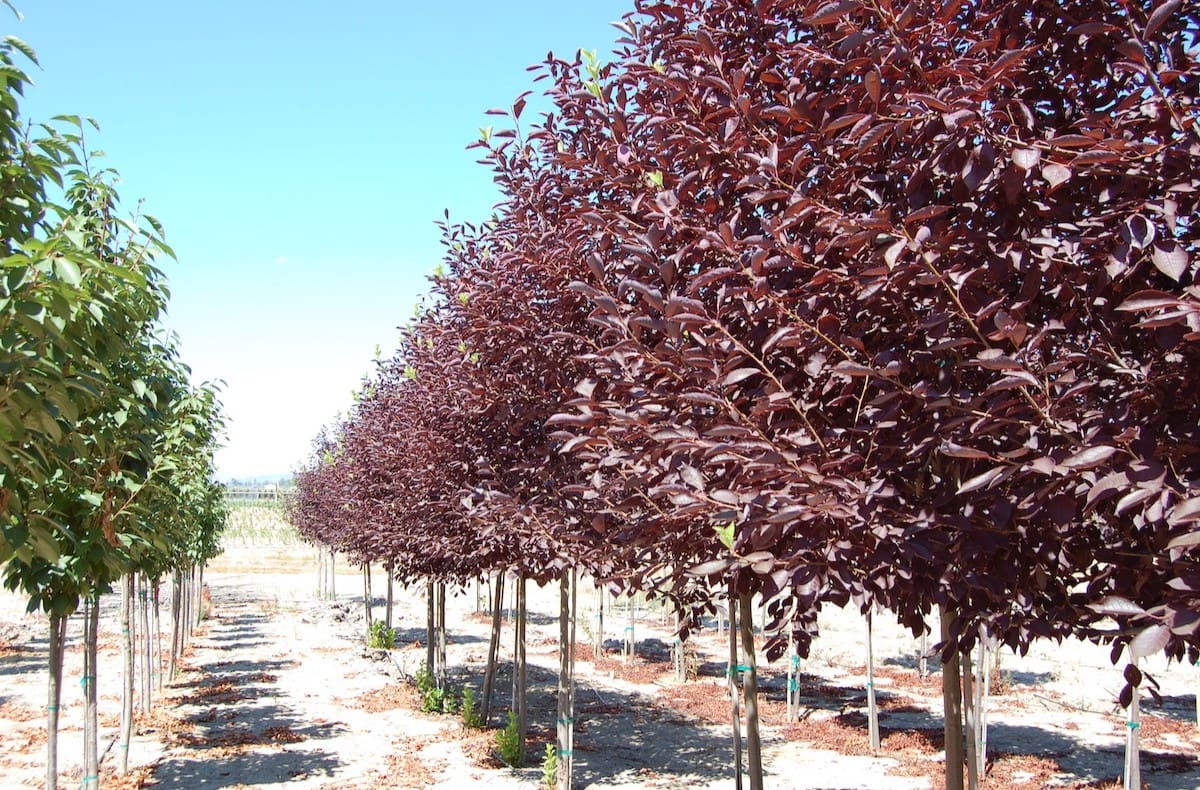
The Canadian red cherry tree, scientifically known as Prunus virginiana, is a captivating and iconic species that holds a special place in Canadian landscapes. Its vibrant red cherries, also known as chokecherries, are not only visually striking but also serve as a vital food source for numerous wildlife species. This hardy and adaptable tree thrives in a variety of environments, from moist lowlands to dry uplands, making it a resilient and valuable addition to Canada's diverse ecosystems.
In this article, we'll delve into 19 fascinating facts about the Canadian red cherry tree, exploring its cultural significance, ecological role, and unique characteristics. From its historical uses by Indigenous peoples to its role in modern conservation efforts, the Canadian red cherry tree offers a wealth of intriguing insights that highlight its enduring importance in Canadian natural and cultural heritage. So, let's embark on a journey to uncover the enchanting world of the Canadian red cherry tree and gain a deeper appreciation for this remarkable native species.
Key Takeaways:
- The Canadian Red Cherry Tree is a native beauty that provides food and shelter for wildlife, boasts stunning blossoms, and holds cultural and historical significance.
- This resilient tree offers environmental benefits, including drought tolerance, wildlife conservation, and ornamental appeal, making it a valuable addition to the Canadian landscape.
It's a Native Beauty
The Canadian Red Cherry Tree is a native species to North America, gracing the landscape with its vibrant foliage and delicate blossoms.
Iconic Red Berries
The tree produces clusters of small, bright red berries that are adored by birds and wildlife, adding a pop of color to the environment.
Versatile Habitat
This resilient tree thrives in a variety of habitats, from moist lowlands to dry uplands, showcasing its adaptability.
Medicinal Uses
Indigenous peoples traditionally used the bark and berries of the Canadian Red Cherry Tree for medicinal purposes, harnessing its natural healing properties.
Wildlife Haven
The tree serves as a crucial food source for numerous bird species, attracting a flurry of avian activity with its bountiful berries.
Stunning Blossoms
In spring, the Canadian Red Cherry Tree boasts a breathtaking display of white flowers, creating a picturesque scene in the Canadian landscape.
Environmental Benefits
This tree plays a vital role in the ecosystem by providing food and shelter for wildlife, contributing to the overall biodiversity of the region.
Timber Value
The wood of the Canadian Red Cherry Tree is highly valued for its strength and durability, making it a sought-after material for various woodworking projects.
Fall Foliage
During the autumn season, the leaves of the Canadian Red Cherry Tree transform into a striking palette of red and gold, painting the surroundings with warmth and color.
Cultural Significance
The tree holds cultural significance among Indigenous communities, often featuring in traditional stories and ceremonies.
Pollinator Magnet
The blossoms of the Canadian Red Cherry Tree attract a myriad of pollinators, including bees and butterflies, supporting the essential process of pollination.
Ornamental Appeal
Due to its stunning blossoms and vibrant foliage, the Canadian Red Cherry Tree is a popular choice for landscaping and ornamental planting.
Drought Tolerance
This resilient tree exhibits impressive drought tolerance, making it a valuable addition to landscapes with challenging environmental conditions.
Historical Roots
The Canadian Red Cherry Tree has a rich historical legacy, with references to its use by early settlers and Indigenous tribes.
Wildlife Conservation
The presence of Canadian Red Cherry Trees in natural areas contributes to the conservation of native wildlife, fostering a healthy and balanced ecosystem.
Culinary Delights
The tart berries of the Canadian Red Cherry Tree are used in a variety of culinary creations, from jams and jellies to flavorful sauces and beverages.
Growth Potential
The tree has the potential for rapid growth, quickly establishing itself in various environments and adding to the greenery of the surroundings.
Environmental Stewardship
Planting Canadian Red Cherry Trees supports environmental stewardship, contributing to the preservation of native flora and fauna.
Ornithological Importance
The Canadian Red Cherry Tree holds significant importance in ornithology, providing essential nourishment for a diverse array of bird species.
The Canadian Red Cherry Tree, with its vibrant presence and ecological significance, stands as a symbol of natural beauty and environmental vitality in the Canadian landscape.
Conclusion
In conclusion, Canadian Red Cherry Trees are not only visually stunning additions to any landscape, but they also offer a host of benefits to the environment and wildlife. Their vibrant red foliage, delicate white blossoms, and delicious cherries make them a favorite among gardeners and nature enthusiasts. These trees also play a crucial role in supporting local ecosystems by providing food and shelter for various species. With their adaptability and resilience, Canadian Red Cherry Trees are an excellent choice for both urban and rural settings, contributing to the beauty and biodiversity of the Canadian landscape.
FAQs
Are Canadian Red Cherry Trees suitable for all climates?
Canadian Red Cherry Trees are well-adapted to the diverse climates of Canada, thriving in both cold and temperate regions. However, it's important to select the appropriate cultivar based on the specific climate conditions in your area to ensure optimal growth and fruit production.
Do Canadian Red Cherry Trees require special care to bear fruit?
While Canadian Red Cherry Trees are relatively low-maintenance, providing adequate sunlight, regular watering, and proper pruning can significantly enhance fruit production. Additionally, ensuring proper soil conditions and protecting the trees from pests and diseases can contribute to a bountiful harvest.
Was this page helpful?
Our commitment to delivering trustworthy and engaging content is at the heart of what we do. Each fact on our site is contributed by real users like you, bringing a wealth of diverse insights and information. To ensure the highest standards of accuracy and reliability, our dedicated editors meticulously review each submission. This process guarantees that the facts we share are not only fascinating but also credible. Trust in our commitment to quality and authenticity as you explore and learn with us.
